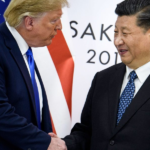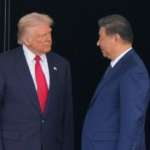Maryam Ali Ficociello serves on multiple governance, compliance, and sustainability committees, and each time she was recommended for one of those board seats, it was a man who would endorse her.
But when Ficociello gets an opportunity to advocate for a peer to be considered for an open board seat, she has prioritized women. “I know that unless we help the other women have that first opportunity, it just doesn’t happen,” said Ficociello during a leadership lunch Tuesday at Fortune’s Most Powerful Women Summit in Riyadh.
Other nations in the region, including Qatar and Kuwait, have established multi-year development plans that include commitments to invest more in education, health care, workforce upskilling, and technology, as well as other private industries outside oil, to reduce reliance on the energy sector.
Some leaders say the pace of change they are seeing in Saudi Arabia feels faster than in those other Middle East nations. “There is real systemic investment in workforces, in education, and development,” said Renée McGowan, CEO for India, Middle East & Africa for insurance brokerage and management consultancy Marsh McLennan, who also spoke at the lunch alongside Ficociello and three other Middle East-based female executives.
Collectively the women speaking at the lunch lauded the progress that Saudi Arabia has made in boosting women’s participation in the local workforce. Jena Ladhani, the CEO of global workplace solutions for CBRE, a U.S. commercial real estate services and investment firm, says the field she works in tends to be very male dominated. But she’s observed more women taking jobs in project management, engineering, and facilities management. Ladhani says CBRE has partnered with Princess Nourah Bint Abdulrahman University—a women’s university in Riyadh—to attract more women to jobs in construction.
“We have expats here, and that’s great, but I know that I’m working toward a Saudi taking my role, as is every expat in my business,” said Ladhani. “It’s just a mandate. It’s how we hire.”
“It was phenomenal to see them just get in there, hold the room, be very direct, be very, very aggressive when they need to be,” added Jaffar.
Giovanna Carnevali, the executive director of urban planning at ROSHN Group, said that in the field of architecture, women tend to make up more than 50% of the university population in Europe and other western economies. While that’s encouraging, she added that the number of women who have success and international visibility within the architectural field is very low.
Carnevali said that on her team at ROSHN—a real estate development subsidiary of Saudi’s sovereign wealth fund, the Public Investment Fund (PIF)—55% are women. That’s a sign, to her, that Vision 2030 is working. “From the construction perspective, I think, here there is more of a chance for women to have stronger visibility,” added Carnevali.
“We didn’t expect that people, that young talent, would want to just, you know, right after high school, do a vocational program and go straight into the workforce,” said Ficociello. “To our surprise, we are very happy with the talent pool.”









